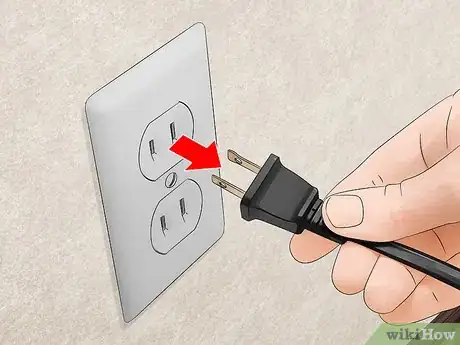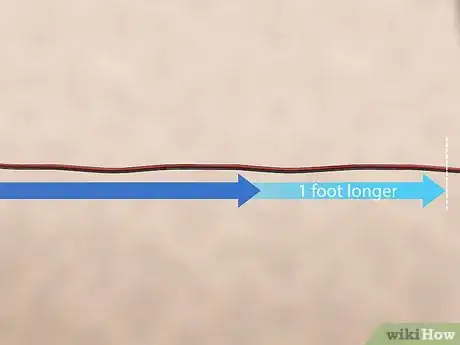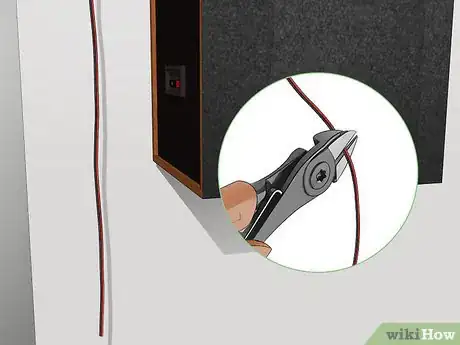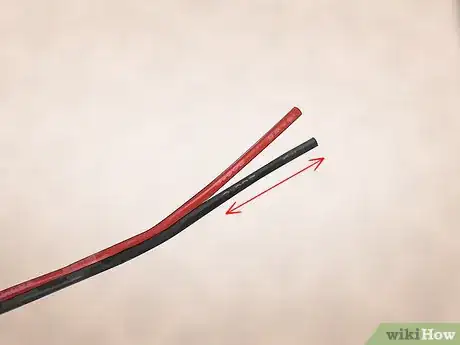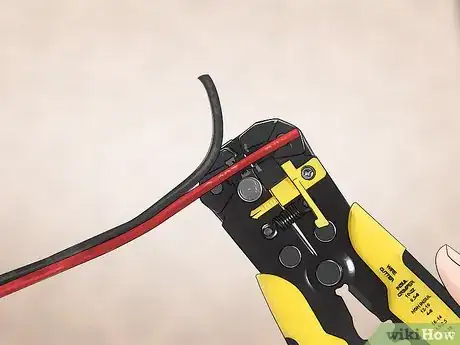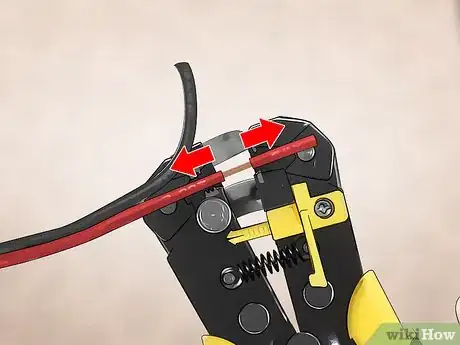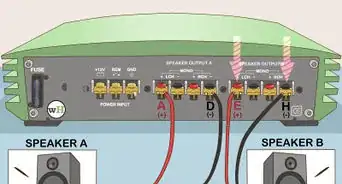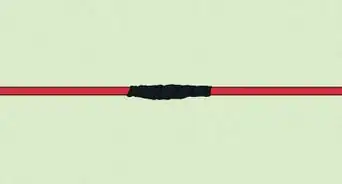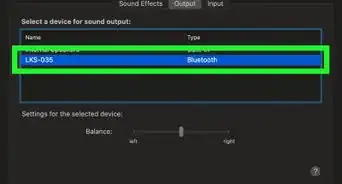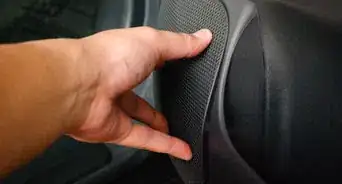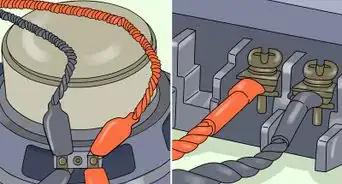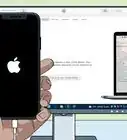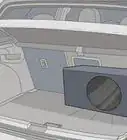X
This article was co-authored by wikiHow Staff. Our trained team of editors and researchers validate articles for accuracy and comprehensiveness. wikiHow's Content Management Team carefully monitors the work from our editorial staff to ensure that each article is backed by trusted research and meets our high quality standards.
This article has been viewed 57,149 times.
Learn more...
When you buy speaker wire, you will have to cut it down to size and expose the metal wires inside the plastic casing before you can work with it. You can do this by using a wire stripper, then cutting the wire to size with scissors or a knife. No matter how you choose to approach this, remember to be cautious and careful around sharp objects.
Steps
Method 1
Method 1 of 2:
Cutting the Wire to Size
-
1Unplug and turn off the device the wires are connected to, if necessary. If you are cutting wire that is already connected to an electronic device or speaker (rather than loose wire yet to be connected) turn off the device and unplug it from the wall before you start working to prevent electrocuting yourself.
- It's more common for speakers to have wires pre-attached than it is for electronic devices, but make sure it's turned off completely before working either way.
-
2Measure the distance you want your wire to travel. Whether you are connecting a speaker to a stereo, to an amp, or to a TV, measure how far you want your wire to travel. Mark the distance between the electronic item and your speaker on the plastic casing, and give yourself a little extra room so the wire isn't completely taut upon connecting it.[1]
- If you plan to move the speaker around a lot, give yourself a lot of extra room so you don't have to cut new wire if it ends up further away than before.
- If the speaker will be in the same place for the foreseeable future, such as for a home theatre system, you don't need to give it much extra room at all.
- To keep the area tidy, plan to run the wires along a skirting board or hidden out of sight rather than directly from the speaker to the connecting device. You will need a lot more wire for this, so measure the path with a ruler and cut that much wire instead of enough to directly connect it.
Advertisement -
3Cut the wire a little longer than your desired length with wire cutters. Give yourself at least 1 ft (0.30 m) of extra room beyond your marked point. Slice the wire in two by placing the wire at the very base of your wire cutters, to get maximum pressure.[2] If you don't have wire cutters, sharp scissors will do the trick, but you will need to use more pressure.
- This is done to ensure that your wire reaches from the electronic to the speakers. You can always cut more wire away, but it's a lot harder to extend it.
- You can also use a sharp knife and hammer to cut the wire to size. Place the wire against a wood cutting board, hold the knife blade-end down at the point you want to cut, then hit the back of the knife with a hammer until it severs the wire. It may take a few swings, but it's a lot easier than sawing the wires away with a knife.
-
4Measure the wire again and cut it down to size. You should have plenty of extra wire at this point, so your wire should reach from your electronic to the speaker. Assess how loose it is, then cut a little bit more away at a time until you are satisfied with how taut the wire is when stretched between its two connecting points.[3]
- Avoid cutting diagonally as best as you can, as this could damage the effectiveness of the wires. Cut perpendicular to the wire to ensure a straight cut.
Advertisement
Method 2
Method 2 of 2:
Stripping the Plastic Casing
-
1Pull apart the positive and negative wires gently. Your speaker wire will have two "sides", one positive and one negative. Go to the end of the wire and pull them apart about 1–2 in (2.5–5.1 cm) down from the tip.[4] The plastic casing should be easy to pull apart, so don't use scissors or a sharp object to cut it or you could risk accidentally stripping your wire casing in the wrong place.
- Some speakers have a red wire and black wire inside a larger plastic casing, so instead of looking like two wires stuck together it will look like a solid wire containing two smaller ones. Pull your positive and negative wires out of this casing at the tip and pull them apart, if necessary.
- Don't worry about which wire is which when cutting them — when wiring a speaker, refer to your user manual or the instructions on your wire's packaging to figure out the correct configuration.
-
2Insert one wire into the wire stripper so the plastic casing touches the blade. You should see a series of holes on your wire strippers. Insert the wire into the hole most suited for the size of your wire so it barely touches the blades.[5] Do not clamp the strippers down all the way, instead close them so the blades barely touch the plastic casing.
- If the fit is too tight, it could be an indicator that you need to use a larger hole on the wire strippers. If the blades cut deeply into the casing it could damage the wires.
- If you don't have wire strippers, you can use nail clippers instead. Insert the tip of the wire head-on into the nail clippers and gently press down to make a cut in the plastic. Cut all the way around, and use your finger nail to pull the plastic casing away.
-
3Pull the wire through the wire strippers to remove the casing. Once you've found the right size hole for your wire, sharply pull the wire backwards through the strippers to remove the casing.[6] It may take several attempts, but be careful every time not to accidentally sever the metal wires encased within. Do this for both the positive and negative wire.
- If you do accidentally sever some wires, it's not a big deal if it's only 1 or 2. If you cut more than this, you may need to start over as you won't be able to make a full connection.
- Twist the exposed metal wire once the casing is removed to make it easier to connect to your speaker system. It also makes it easier to connect the wire to other wires, as loose ends are tougher to tie together than a single, twisted piece of wire.[7]
Advertisement
References
- ↑ https://www.lifewire.com/how-to-splice-speaker-wire-4151665
- ↑ https://www.lifewire.com/how-to-splice-speaker-wire-4151665
- ↑ https://www.lifewire.com/how-to-splice-speaker-wire-4151665
- ↑ https://youtu.be/u6zHOyq1GTk?t=100
- ↑ https://youtu.be/ySfOKtW_Aig?t=69
- ↑ https://youtu.be/ySfOKtW_Aig?t=74
- ↑ https://youtu.be/ySfOKtW_Aig?t=88
About This Article
Advertisement
